 The Charge of the Light Brigade was a famous debacle. It was a cavalry charge at the Battle of Balaklava (October 25th, 1854) in the Crimean War and it was a slaughter. The British cavalry, armed solely with sabres, was ordered — either through poor communication or officer arrogance or incompetence or a little bit of everything — to charge down a valley and attack Russian artillery batteries. The Russians had 20 infantry battalions, fifty large artillery pieces and they held the heights on both sides of the valley, so these poor Light Brigade guys had to race through a hail of cannon fire towards a hail of cannon fire wielding nothing but their swords. Out of the 673 cavalrymen, 118 died, 122 were wounded and 335 horses killed. Around 60 men were taken prisoner by the Russians. Only 195 complete one man-one horse pairs were left, which obviously completely disabled their function as a cavalry brigade.
The Charge of the Light Brigade was a famous debacle. It was a cavalry charge at the Battle of Balaklava (October 25th, 1854) in the Crimean War and it was a slaughter. The British cavalry, armed solely with sabres, was ordered — either through poor communication or officer arrogance or incompetence or a little bit of everything — to charge down a valley and attack Russian artillery batteries. The Russians had 20 infantry battalions, fifty large artillery pieces and they held the heights on both sides of the valley, so these poor Light Brigade guys had to race through a hail of cannon fire towards a hail of cannon fire wielding nothing but their swords. Out of the 673 cavalrymen, 118 died, 122 were wounded and 335 horses killed. Around 60 men were taken prisoner by the Russians. Only 195 complete one man-one horse pairs were left, which obviously completely disabled their function as a cavalry brigade.
Although it was a stupid waste of life and a military failure, it gave the British cavalry a huge boost of respect and popularity. Alfred, Lord Tennyson wrote a poem a few weeks after the battle which sealed their reputation for courage in the face of certain death. The Charge of the Light Brigade would become vernacular for the futile bravery.
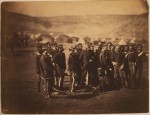 Decades passed. In May of 1890, Secretary of State for War Edward Stanhope announced that the government would not grant any financial relief to the destitute survivors of the Charge of the Light Brigade because it wouldn’t be fair to single out one set of survivors, no matter how glorious their action, for benefits that no other veterans of their rank would receive. The cavalry charge down the valley of death, as Tennyson so memorably put it, was by then immortalized in the public imagination as the pinnacle of courage and valour, so the neglect of these heroes, now old, infirm and poor, caused a scandal.
Decades passed. In May of 1890, Secretary of State for War Edward Stanhope announced that the government would not grant any financial relief to the destitute survivors of the Charge of the Light Brigade because it wouldn’t be fair to single out one set of survivors, no matter how glorious their action, for benefits that no other veterans of their rank would receive. The cavalry charge down the valley of death, as Tennyson so memorably put it, was by then immortalized in the public imagination as the pinnacle of courage and valour, so the neglect of these heroes, now old, infirm and poor, caused a scandal.
In response, the St. James Gazette set up the Light Brigade Relief Fund so that the public could help support the veterans with their contributions and redeem “a national disgrace of the most odious description.” The campaign was supported by contemporary luminaries like Rudyard Kipling, who wrote The Last of the Light Brigade, a sort of sequel to the Charge in which survivors reproach Tennyson for not writing a follow-up that would reveal how the country they fought so valiantly for has abandoned them.
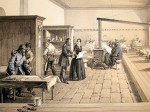 Also enlisted in the cause were three people closely associated with the Battle of Balaclava: Florence Nightingale, pioneering nurse who made her bones, so to speak, tending to the wounded during the Crimean War, Lord Tennyson himself, author of the poem that would ensure the immortality of the Charge of the Light Brigade, and Martin Leonard Lanfried, trumpeter of the 17th Lancers who sounded the actual charge. They would contribute with cutting edge technology: sound recordings of their voices that would be played at public events to raise money for the relief fund. This was the first Do They Know It’s Christmas ever made.
Also enlisted in the cause were three people closely associated with the Battle of Balaclava: Florence Nightingale, pioneering nurse who made her bones, so to speak, tending to the wounded during the Crimean War, Lord Tennyson himself, author of the poem that would ensure the immortality of the Charge of the Light Brigade, and Martin Leonard Lanfried, trumpeter of the 17th Lancers who sounded the actual charge. They would contribute with cutting edge technology: sound recordings of their voices that would be played at public events to raise money for the relief fund. This was the first Do They Know It’s Christmas ever made.
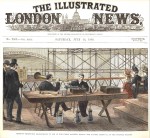 It was Colonel George Edward Gouraud, Civil War hero on the Union side, winner of the Congressional Medal of Honor for rallying the men under heavy enemy fire and Edison’s representative in England, who recorded the three on wax cylinders. He had personally contributed £1,500 (about £90,000 or $137,000 in today’s spending power) to the Light Brigade Relief Fund and then contributed his skills and Edison’s invention, which he had only introduced to England two years before, to the cause.
It was Colonel George Edward Gouraud, Civil War hero on the Union side, winner of the Congressional Medal of Honor for rallying the men under heavy enemy fire and Edison’s representative in England, who recorded the three on wax cylinders. He had personally contributed £1,500 (about £90,000 or $137,000 in today’s spending power) to the Light Brigade Relief Fund and then contributed his skills and Edison’s invention, which he had only introduced to England two years before, to the cause.
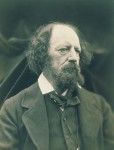 On May 15th, 1890, he recorded Alfred, Lord Tennyson reading The Charge of the Light Brigade. On July 30th, he recorded Florence Nightingale’s message to her “dear old comrades of Balaclava” at her home on 10 South Street, Park Lane, London. On August 2nd, he recorded Martin Lanfried sounding the charge on the very trumpet used at the battle. As if that wasn’t enough, the same bugle was also used at the Battle of Waterloo on June 18, 1815, and remained in use until the 17th Lancers were merged with other regiments to form the Queens Royal Lancers in 1993.
On May 15th, 1890, he recorded Alfred, Lord Tennyson reading The Charge of the Light Brigade. On July 30th, he recorded Florence Nightingale’s message to her “dear old comrades of Balaclava” at her home on 10 South Street, Park Lane, London. On August 2nd, he recorded Martin Lanfried sounding the charge on the very trumpet used at the battle. As if that wasn’t enough, the same bugle was also used at the Battle of Waterloo on June 18, 1815, and remained in use until the 17th Lancers were merged with other regiments to form the Queens Royal Lancers in 1993.
And now for the sounds of history. First is Alfred Tennyson reciting the first three stanzas of The Charge of the Light Brigade in stentorian declamation.
[audioplayer file=”http://www.thehistoryblog.com/wp-content/uploads/2013/02/from-The-Charge-of-the-Light-Brigade.mp3″ titles=”Tennyson recites The Charge of the Light Brigade”]
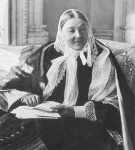 Next is Florence Nightingale, introduced by Mary Helen Ferguson who has one of those unfortunate talking doll voices I can’t quite understand but appears to be announcing the location and date of the recording. Florence speaks after her in far more pleasing tones saying: “When I am no longer even a memory, just a name, I hope my voice may perpetuate the great work of my life. God bless my dear old comrades of Balaclava and bring them safe to shore. Florence Nightingale.”
Next is Florence Nightingale, introduced by Mary Helen Ferguson who has one of those unfortunate talking doll voices I can’t quite understand but appears to be announcing the location and date of the recording. Florence speaks after her in far more pleasing tones saying: “When I am no longer even a memory, just a name, I hope my voice may perpetuate the great work of my life. God bless my dear old comrades of Balaclava and bring them safe to shore. Florence Nightingale.”
[audioplayer file=”http://www.thehistoryblog.com/wp-content/uploads/2013/02/VoiceOfFlorenceNightingale1890.mp3″ titles=”Florence Nightingale speaks for posterity”]
Finally here is Martin Lanfried, veteran of the Battle of Balaclava, who was wounded in the action and his horse killed underneath him, introducing himself and playing the charge.
[audioplayer file=”http://www.thehistoryblog.com/wp-content/uploads/2013/02/Martin-Lanfried-bugler.mp3″ titles=”Trumpeter Martin Lanfried plays the charge”]
Colonel Gouraud’s Edison Phonograph Company went through various iterations and wound up Edison Bell Ltd., J.E. Hough owner. The market for cylinders was dying, replaced by phonograph records, and by the early 1930s it went bankrupt. Its assets, including the historic 1890 Light Brigade cylinders, were purchased by Howard Flynn. Flynn actually tried to sell a record of the Florence Nightingale recording with all royalties going to the Red Cross and other hospital charities, but it was a flop. In 1935, he donated the Nightingale cylinder to the Wellcome Historical Medical Museum. It was transferred to the Wellcome Trust Library where it remained unnoticed until 2004 when Dr. Michael Clark dug it up and brought it to the British Library for restoration.
The Relief Fund successfully raised enough money to give grants to the neediest of the soldiers with £3,000 left over. The money was invested so it could help the greatest number of veterans, but in 1892 Parliament granted pensions to soldiers who had served 10 years or more so the rest of the fund money was distributed on a sliding scale.